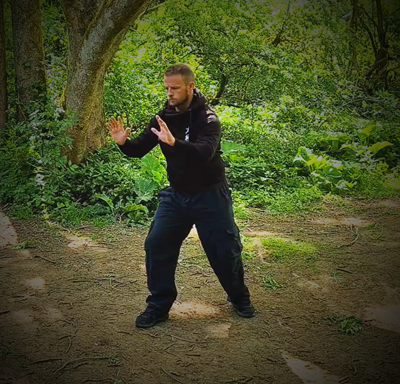In today’s article on ‘unpacking the classics’ we dig into the following verse.
If there is up there is down,
When advancing have regard for with drawling
When striking left pay attention right
In this verse the author describes a specific direction and then highlights its opposite to express how they are intimately linked and vital to one another. This is actually a relatively complex subject, especially if we look beyond simple movement directions. The purpose of the authors verse is to highlight that direction must always be counted balanced, so that it remains stable and centred, one of the primary qualities of Tai Chi.
 In the first line of this verse we see that the author describes the two primary directions found in tai chi, up and down. If you read previous articles you will note that these two initial directions represent the heaven and earth directions which interact inside us to produce rising and sinking in our bodies. This rising and sinking can then be focused through the alignment of the tissues and bones of our body to produce direction like forwards back or side to side. It is interesting to note that the author comments on how even when rising there is always an aspect of sinking and when sinking there is an aspect of rising. It is important that we grasp this basic understanding, so important that it is represented in the classic yin yang symbol (tai chi) where there is always some yin inside of yang and Vice versa.
In the first line of this verse we see that the author describes the two primary directions found in tai chi, up and down. If you read previous articles you will note that these two initial directions represent the heaven and earth directions which interact inside us to produce rising and sinking in our bodies. This rising and sinking can then be focused through the alignment of the tissues and bones of our body to produce direction like forwards back or side to side. It is interesting to note that the author comments on how even when rising there is always an aspect of sinking and when sinking there is an aspect of rising. It is important that we grasp this basic understanding, so important that it is represented in the classic yin yang symbol (tai chi) where there is always some yin inside of yang and Vice versa.
To explain this point further, think of the sensation of sinking in the body. We do not simply collapse to the floor in a heap, instead we sink with control, smoothness and clarity. The reason that we maintain our structure as we sink is the maintenance of an upwards counter point to our downwards direction. Although the downward direction is dominant as we sink, the upwards direction remains ever present if we were to pay attention to it. So we see that inside of the sinking direction and upwards direction remains present, inside of down; there is up.
This duality of direction when seemingly only moving in one, is also present in all other directions as highlighted in the next line of the verse. Here, the author talks of us regarding this other aspect of our motion. When performing action we should bear in mind and connect to the counterpoint or counter force that is also present. This will have the effect of stabilising and solidifying our movements because our direction will always be tempered by an appreciation of its opposite. Ultimately this means that we do not overcommit our mass as we move and are able to effectively utilise all of our weight without passing it over to an opponent in an uncontrolled way.
It is actually extremely common in the martial arts for us to completely commit our mass. We see this in judo and many throwing arts where the commitment of mass is paramount to perform an affective throw. Tai chi approaches this subject in a different fashion however, as do most internal arts, because in order for other aspects of our internal power to be effective, not committing our mass into a motion at the expense of a balance or stability is vital. It is an exercise in maintaining our centre and although arts like judo are highly effective, to commit our mass in the same fashion in the application of Tai Chi would be a mistake.
The author of this verse was very clever in their choice of words, they describe the reality of opposites inside our body when performing are given action and then ask us to pay attention to those opposites. These opposites can be found in all tai chi practice from the form to the internal work and should be a consideration to form habits that are in line with the Tai Chi approach to maintenance of centre and balance.
When performing a movement forwards, either with our arms or our entire body, rest your mind on the factor that is allowing you to move with control. It is this factor inside the body that is the opposite of the direction of travel, supporting the ability to move with that control. After some time of training we can begin to truly feel the marriage of equal opposites, balancing each other as we move, one dominant and obvious to the external observer and one hidden that is tempering that motion.
Eventually, this awareness of opposites will once again dissolve and the body will naturally balance yin and yang as we move and apply our martial art. It is in this moment that we are truly performing tai chi as we balance opposites in constant change within our practice and in association with our partner or opponent.